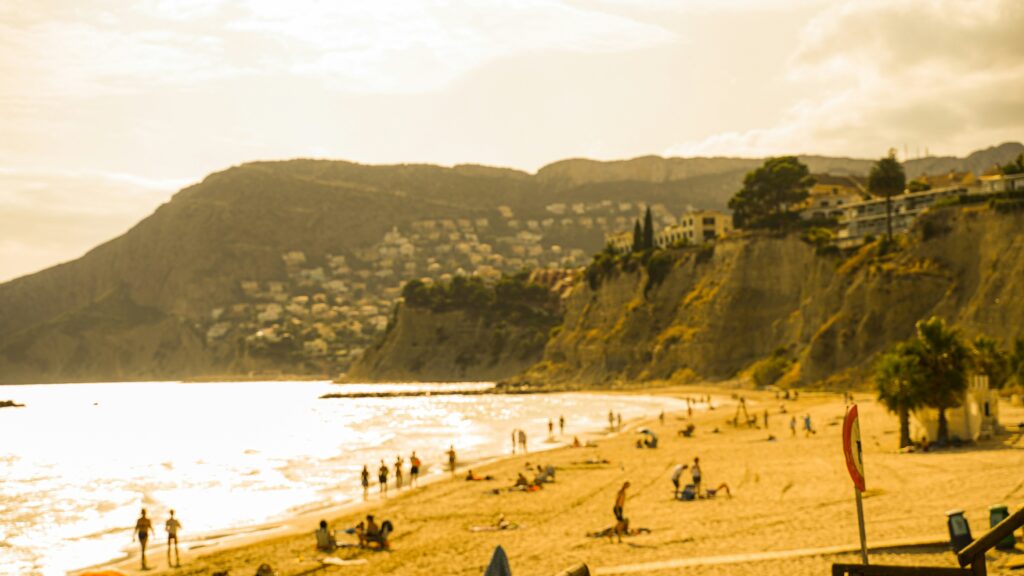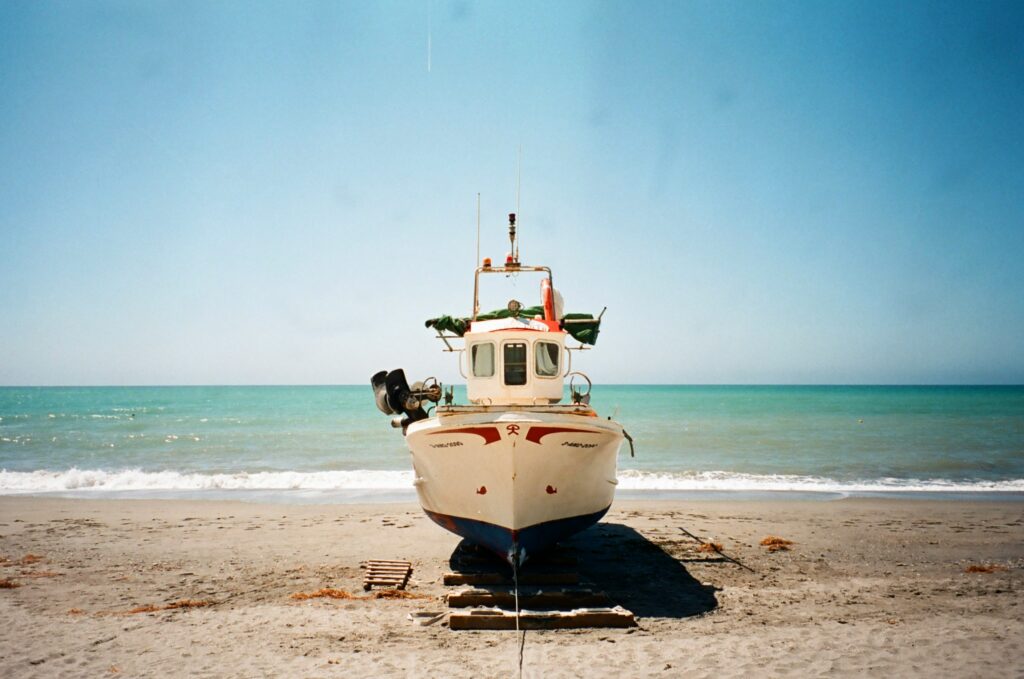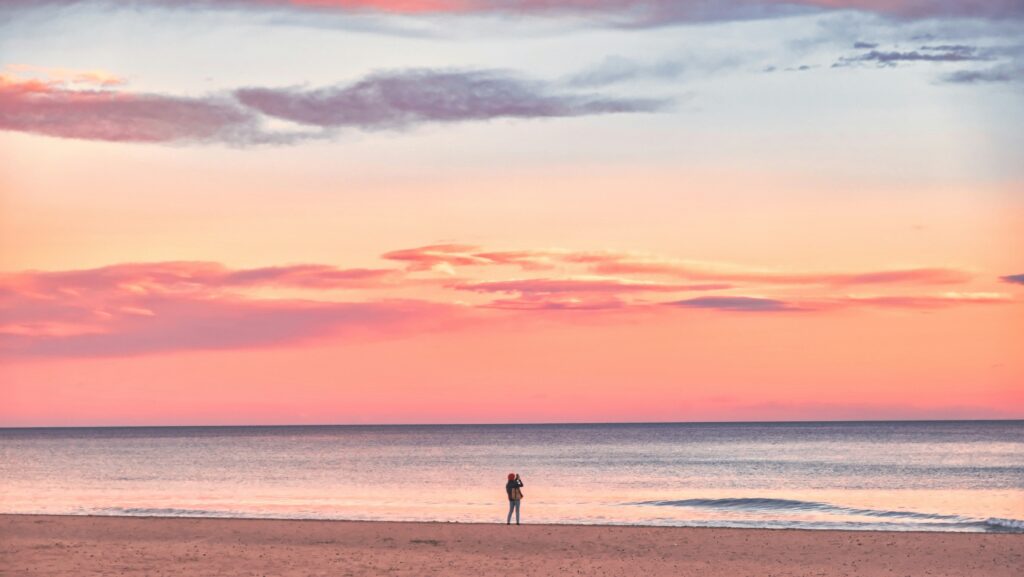There’s something about Spain’s light that feels almost sentient.
It doesn’t simply illuminate; it communicates.
It spills through shutters, paints walls with quiet gold, and turns even the most ordinary moment — a cup of coffee, a hanging towel, a window sill — into a still life.
I didn’t notice it immediately.
It took a few days for my eyes to adjust to its warmth, for my nervous system to recognise brightness not as stimulation but as invitation.
In Spain, the light doesn’t hurry you. It lingers — long, slow, forgiving — and somewhere inside you start doing the same.
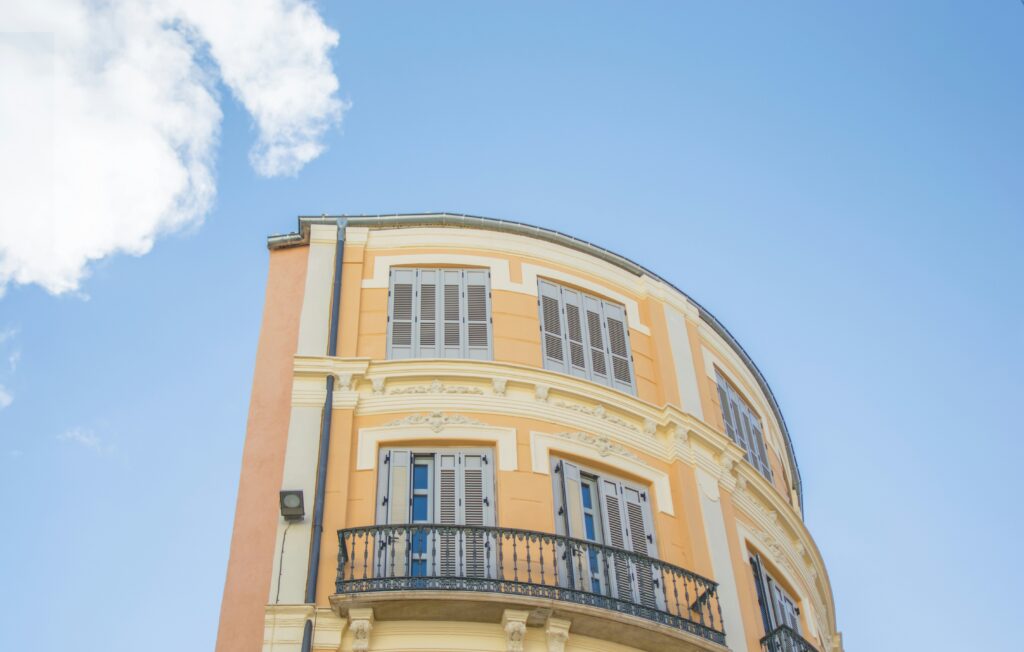
Color as a Language of Healing
In the north of Europe, colors often whisper: soft grays, cautious blues, polite neutrals.
Spain doesn’t whisper. It sings.
Terracotta roofs blaze under cobalt skies. Bougainvillea climbs whitewashed walls like joy that can’t be contained. Even food looks alive — oranges too vivid to be real, olive oil shining like melted sun.
After months of monochrome screens, those colors feel medicinal.
There’s a direct, physical relief in them, as if your body had been craving pigment without knowing it.
Every walk through a Spanish market feels like chromotherapy: tomatoes like rubies, lemons like laughter, the indigo of a ceramic bowl that somehow quiets the mind.
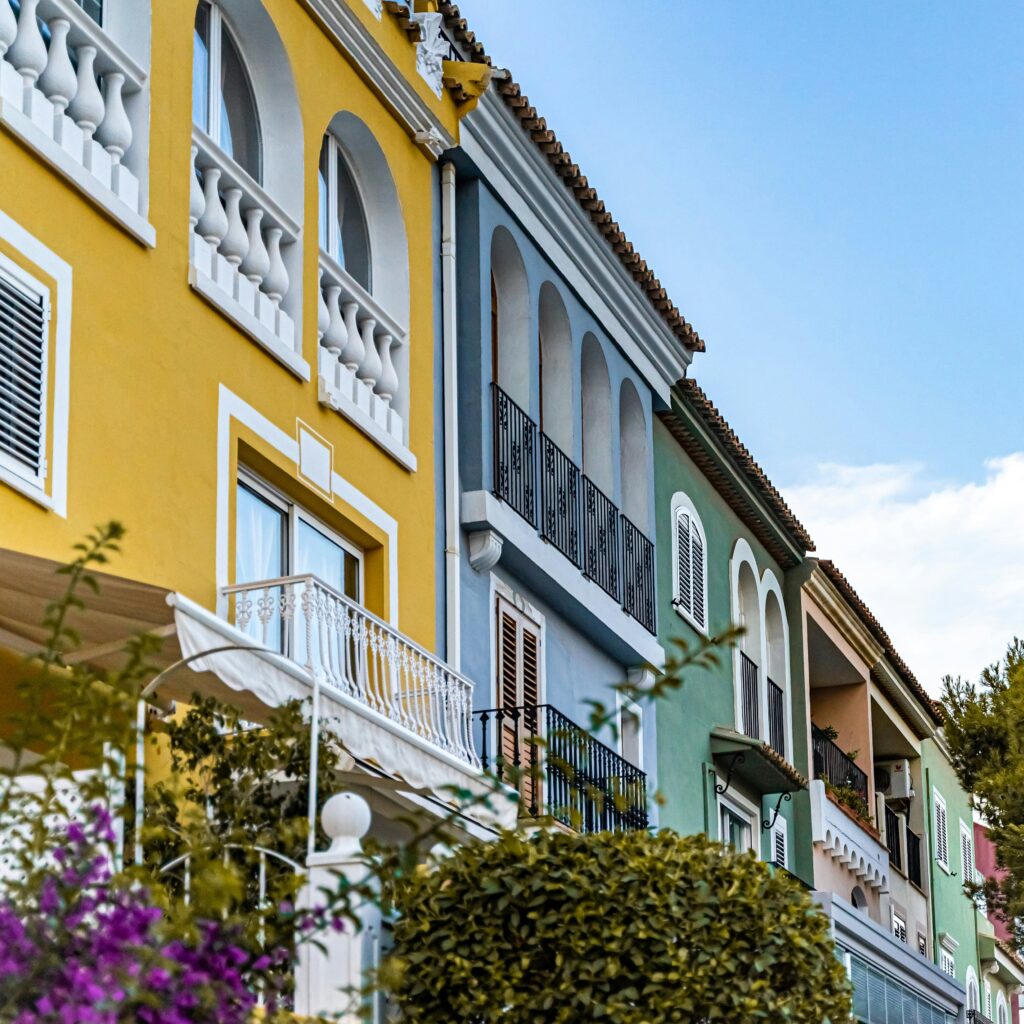
I remember once sitting outside a small café in Jávea.
The air smelled of sea salt and espresso.
The table was blue, chipped, imperfect.
The sunlight hit it in a way that made the blue shimmer — not bright, but deep, like a memory you suddenly remember belongs to you.
And in that exact second, I realised: color heals not by decorating your world, but by reminding you you’re part of it.
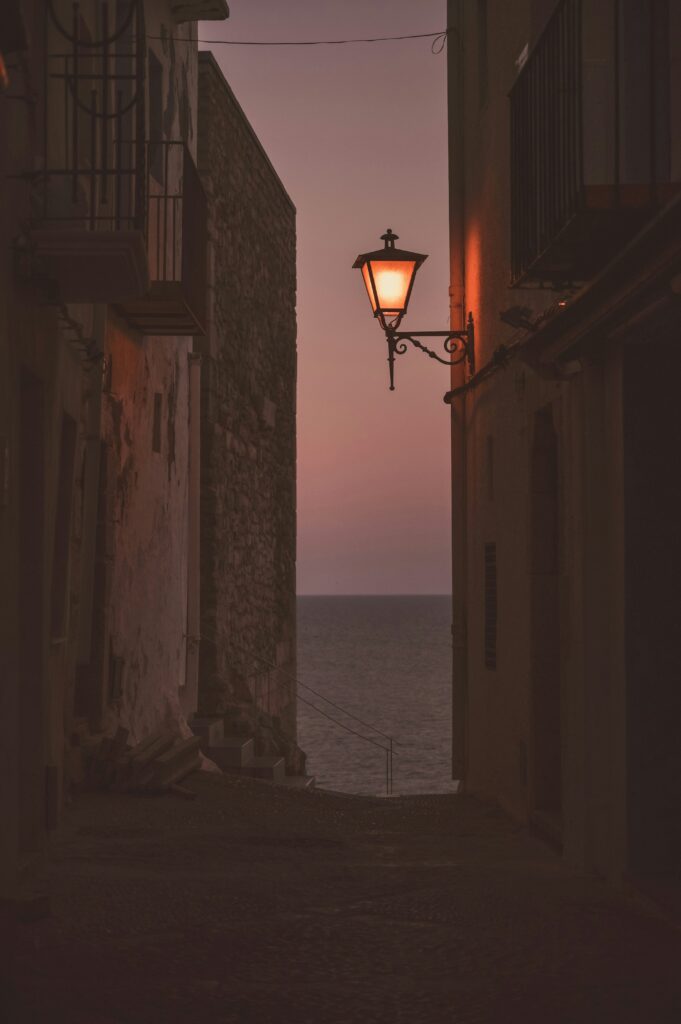
The Mediterranean Palette and the Nervous System
Science would call it serotonin, dopamine, or vitamin D, but I think it’s simpler.
The body recognises balance.
Warm hues — ochre, coral, amber — activate energy; cool tones — turquoise, sage, soft white — calm it.
Spain offers both in perfect conversation: mountains burn red while the sea stays infinite blue.
After a few days under Mediterranean light, your shoulders drop.
You breathe differently — deeper, slower, as if your lungs finally trust the world again.
It’s no coincidence that so many wellness and yoga retreats here schedule morning practice outdoors; the color of sunrise itself is therapy.
Every pose feels like a dialogue with light: inhale gold, exhale tension.
You start to understand why the painters — Sorolla, Miró, Picasso — came here not to escape life but to see it more clearly.
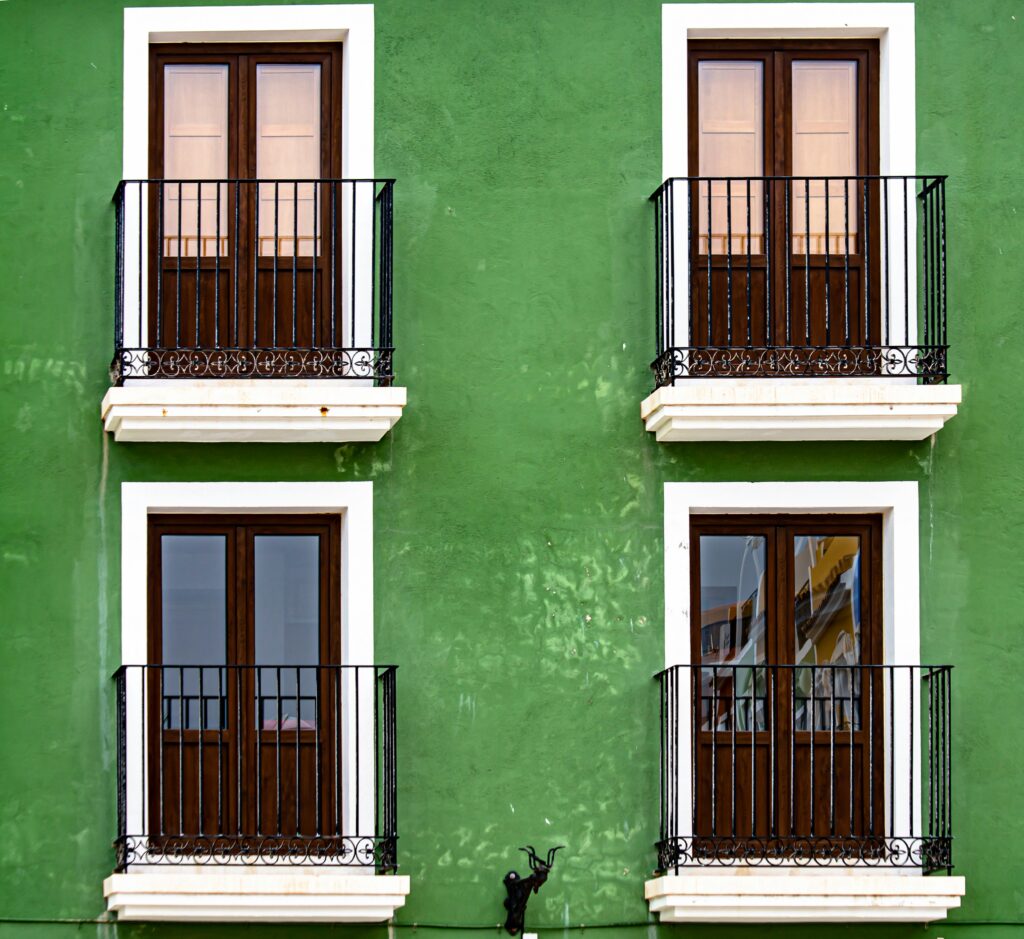
The Small Lessons of Color
In Andalusia, white isn’t just white. It’s a thousand shades of patience.
In Barcelona, blue isn’t a single note — it’s layers of reflection, sea over sky over tile.
Colors here aren’t decoration; they’re conversation.
And somewhere between those tones, you start to heal.
Not from dramatic pain, but from the quiet exhaustion of constant grayscale — the dull hum of fluorescent light, the blue tint of screens, the monotony of urban interiors.
Spain re-teaches your senses generosity.
It reminds you that beauty is not luxury; it’s nourishment.
The Return to Simplicity
By the end of a few weeks, you stop chasing pictures.
You no longer need to photograph the light; it lives in you.
You dress in softer tones, eat slower, and notice the way color organizes emotion — how blue steadies, how orange opens, how green forgives.
The palette becomes internal.
And when you return home — to cities of metal and glass — you carry a trace of it.
Maybe in the way you choose a cup, or notice the color of morning through your own window.
Spain’s Mediterranean light doesn’t stay on your skin; it settles somewhere deeper, a quiet warmth under the ribs — a memory of being illuminated and, for once, completely at ease.


